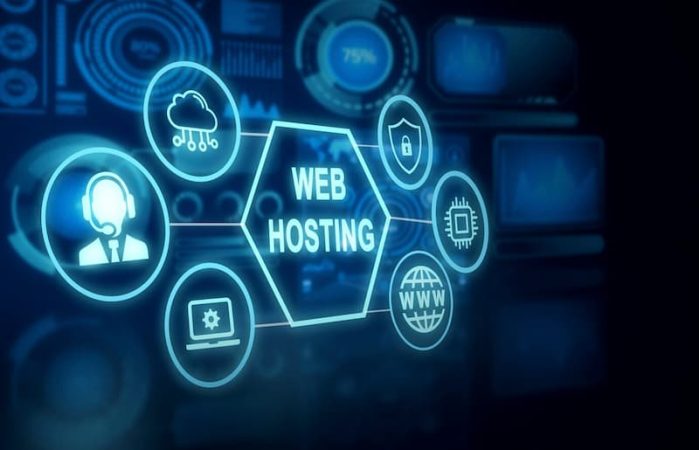
1. Digimagaz.com – Artificial Intelligence (AI):
AI refers to the development of computer systems that can perform tasks that typically require human intelligence, such as speech recognition, decision-making, and problem-solving. Its potential implications include:
– Automation: AI has the potential to automate various tasks across industries, leading to increased efficiency, cost savings, and productivity gains. However, it could also disrupt job markets and require workers to adapt to new roles.
– Personalized Experiences: AI can enable personalized experiences by analyzing vast amounts of data and tailoring recommendations and services to individual preferences. This can enhance customer satisfaction but also raise concerns about privacy and data security.
2. Internet of Things (IoT):
IoT refers to the network of interconnected physical devices embedded with sensors, software, and connectivity, enabling them to collect and exchange data. Its potential implications include:
– Smart Homes and Cities: IoT can facilitate the creation of smart homes and cities by connecting devices for improved energy management, security systems, and efficient infrastructure. However, it raises concerns about data privacy, cybersecurity, and potential vulnerabilities.
– Enhanced Connectivity: IoT can enable seamless connectivity between devices, leading to improved communication, real-time data sharing, and enhanced efficiency in various sectors such as healthcare, transportation, and manufacturing.
3. Blockchain:
Blockchain is a decentralized and distributed ledger technology that enables secure and transparent transactions across multiple parties. Its potential implications include:
– Secure Transactions: Blockchain can enhance security and trust in financial transactions, supply chains, and digital identity verification. It reduces the risk of fraud and tampering by providing an immutable record of transactions.
– Disintermediation: Blockchain has the potential to disrupt traditional intermediaries like banks and escrow services by enabling peer-to-peer transactions without the need for intermediaries. This could lead to greater efficiency, cost savings, and increased transparency.
4. Virtual and Augmented Reality (VR/AR):
VR and AR technologies create immersive digital experiences that blend the virtual and physical worlds. Their potential implications include:
– Enhanced Entertainment and Gaming: VR and AR can revolutionize the entertainment and gaming industries by providing immersive experiences, interactive storytelling, and realistic simulations.
– Training and Education: VR and AR can be used for virtual training simulations, educational experiences, and remote collaboration, providing realistic and engaging learning environments.
These are just a few examples of emerging technologies and their potential implications. It’s important to note that as these technologies continue to evolve, their impact on society, industries, and individuals may change and present both opportunities and challenges.
Practicing Responsible Use of Technology: Maintaining a Healthy Digital Balance
Practicing responsible use of technology in our daily lives is important to maintain a healthy and balanced relationship with digital tools. Here are some ways to promote responsible use:
1. Set Boundaries:
Establish clear boundaries for technology use. Allocate specific times for activities like checking emails, browsing social media, or playing video games. Limit screen time and ensure that technology use does not interfere with important aspects of life, such as work, study, relationships, or physical well-being.
2. Digital Detox:
Take regular breaks from technology. Designate periods of time, such as weekends or evenings, to disconnect from devices and engage in offline activities. Use this time for hobbies, exercise, spending time with loved ones, or simply relaxing without screens.
3. Mindful Consumption:
Practice mindful consumption of digital content. Be conscious of the time spent on social media, news consumption, or online entertainment. Evaluate the quality and relevance of the content you engage with, and avoid excessive exposure to negative or harmful information.
4. Privacy and Security:
Protect your privacy and personal information online. Use strong and unique passwords, enable two-factor authentication, and be cautious about sharing sensitive details on public platforms. Regularly update software and apps to ensure they have the latest security patches.
5. Digital Etiquette:
Practice good digital etiquette or “netiquette.” Be respectful and considerate in online interactions, whether it’s through emails, social media, or online forums. Avoid cyberbullying, spreading misinformation, or engaging in harmful behaviors that can negatively impact others.
6. Critical Thinking:
Develop critical thinking skills to evaluate the credibility and accuracy of information encountered online. Be cautious of fake news, misinformation, and scams. Verify information from multiple reliable sources before sharing or acting upon it.
7. Balanced Lifestyle:
Maintain a balanced lifestyle by incorporating offline activities and face-to-face interactions. Engage in physical exercise, hobbies, reading books, or spending time outdoors. Promote healthy relationships by prioritizing real-life connections and conversations.
8. Digital Well-being Tools:
Take advantage of digital well-being tools and features available on devices and applications. Many platforms offer features to track and limit screen time, set app usage limits, or enable “do not disturb” modes. Use these tools to manage and regulate your technology usage.
By implementing these practices, we can foster a healthier and more mindful relationship with technology, ensuring that it enhances our lives without becoming overwhelming or detrimental to our well-being.
Exploring Emerging Technologies: Implications and Potential
Certainly! Here are a few examples of emerging technologies and their potential implications:
1. Artificial Intelligence (AI):
AI refers to the development of computer systems that can perform tasks that typically require human intelligence, such as speech recognition, decision-making, and problem-solving. Its potential implications include:
- Automation: AI has the potential to automate various tasks across industries, leading to increased efficiency, cost savings, and productivity gains. However, it could also disrupt job markets and require workers to adapt to new roles.
- Personalized Experiences: AI can enable personalized experiences by analyzing vast amounts of data and tailoring recommendations and services to individual preferences. This can enhance customer satisfaction but also raise concerns about privacy and data security.
2. Internet of Things (IoT):
IoT refers to the network of interconnected physical devices embedded with sensors, software, and connectivity, enabling them to collect and exchange data. Its potential implications include:
- Smart Homes and Cities: IoT can facilitate the creation of smart homes and cities by connecting devices for improved energy management, security systems, and efficient infrastructure. However, it raises concerns about data privacy, cybersecurity, and potential vulnerabilities.
- Enhanced Connectivity: IoT can enable seamless connectivity between devices, leading to improved communication, real-time data sharing, and enhanced efficiency in various sectors such as healthcare, transportation, and manufacturing.
3. Blockchain:
Blockchain is a decentralized and distributed ledger technology that enables secure and transparent transactions across multiple parties. Its potential implications include:
- Secure Transactions: Blockchain can enhance security and trust in financial transactions, supply chains, and digital identity verification. It reduces the risk of fraud and tampering by providing an immutable record of transactions.
- Disintermediation: Blockchain has the potential to disrupt traditional intermediaries like banks and escrow services by enabling peer-to-peer transactions without the need for intermediaries. This could lead to greater efficiency, cost savings, and increased transparency.
4. Virtual and Augmented Reality (VR/AR):
VR and AR technologies create immersive digital experiences that blend the virtual and physical worlds. Their potential implications include:
- Enhanced Entertainment and Gaming: VR and AR can revolutionize the entertainment and gaming industries by providing immersive experiences, interactive storytelling, and realistic simulations.
- Training and Education: VR and AR can be used for virtual training simulations, educational experiences, and remote collaboration, providing realistic and engaging learning environments.
These are just a few examples of emerging technologies and their potential implications. It’s important to note that as these technologies continue to evolve, their impact on society, industries, and individuals may change and present both opportunities and challenges.








